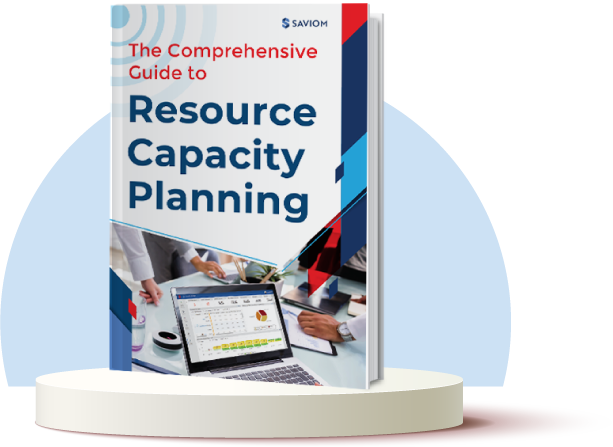In the famous words of Peter Drucker, also known as the “founder of modern management,” “Management is doing things right; leadership is doing the right things.”
Although leadership and management are used interchangeably, they are essentially different and complementary to one another.
To ensure success and meet long-term objectives, an organization needs a proper blend of management and leadership skills.
Manager vs. leader- how do they differ? A leader follows a transformational process to develop a vision and find a way forward to achieve the goal. In contrast, a manager follows transactional processes to execute the deliverables.
The pertinent question is, can you identify yourself as a leader or manager? Or do you think you have the qualities and skills of both?
The fact is, you cannot have an absolute answer. One way to understand your stance is to assess the skills the responsibilities of both.
This article highlights the essential qualities and responsibilities to help you to make a self-assessment.
First, let’s look at the basics.
Who is a leader, and who is a manager?
A leader is an anchor who steers the team members towards attaining the organization’s strategic goals. They inspire and encourage their team to execute the mission and vision of the organization. For example, when a company plans to scale up, leaders will ensure that the employees are working in the right direction to translate it into reality.
A manager is an expert in their field or possesses subject matter expertise and is a support system for employees. They plan, organize, delegate tasks and coordinate to achieve a specific outcome. Managers typically work in cohesion with the team to achieve short-term and long-term goals. For instance, when a company starts a new project, managers formulate and develop the right process for its successful completion.
Now that the definition is clear, let us look at some of their most essential qualities and responsibilities:
Qualities and responsibilities of a leader
We have established that leaders facilitate the workforce to attain strategic goals. But, how do they do this, and what skills do they implement? Let’s take a look:
Focuses on long-term vision
Focusing on the larger picture and developing strategies, keeping in mind the long-term prospects, is one of the critical leadership qualities. That’s why leaders are considered visionaries. They set pathways for organizational growth and sustainability.
Since their focus is on long-term organizational success, they examine where their organization stands, where they want to go, and how they can reach there by involving the team.
Avoids micromanagement
As discussed earlier, the main focus of leaders is the end goal, not the process. Therefore, they avoid micromanaging them and instead empower the employees to follow their path and reach the goal. Observing this practice instills accountability and responsibility in the workforce.
Moreover, leaders trust the team to get their best work done and support them if and when they need it. They also encourage their team to try new ways of doing things and provide constructive feedback to bring in the best results rather than telling them what to do.
Read More: 7 Effective Ways to Empower Employees and Prevent Micromanagement
Leads by example
A leader is a role model for everyone. They do not just push team members towards excellence; they actively demonstrate it. People who lead by example illustrate that they value their team’s work by taking up some of their responsibilities.
Leading by example not only cultivates high performance by enabling mirroring but also forms a legacy for other employees to follow and upkeep efficiency. In addition, it motivates employees to be more productive and accountable, fostering higher engagement.
Builds trust and transparency
An efficient leader plays a significant role in fostering trust and transparency across the organization. It reflects that they are confident of their workforce’s talent and potential.
Moreover, leaders communicate organizational expectations with utmost transparency to help employees work in the right direction. This also garners a sense of value and purpose which translates into a positive employer-employee relationship.
Challenges the conventional ways
The ever-evolving business landscape and work practices demand leaders go beyond conventional methods to stay relevant. In addition, the modern workforce prefers an approachable leader instead of an authoritative one.
Thus, leaders are open to changes and new opinions and challenge the traditional ways that do not serve a purpose in today’s workplace. For instance, they can implement techniques like reverse mentoring where both leaders and team members learn from each other or an open-door policy to ensure that employees’ voices are heard and valued.
Encourages innovation and creativity
According to the McKinsey global survey, 84% of executives say that innovation is critical to their companies’ growth strategy.
Great leaders recognize that experimentation and risk-taking are essential to maintain a company’s competitive advantage. Therefore, they encourage a culture of innovation and creativity. Through innovation, employees are promoted to think out of the box and propose new ideas.
It provides a platform for the employees to showcase their talent and go the extra mile to add value, thus enhancing productivity. In addition, leaders can also help turn these ideas into exceptional products or services if they are feasible.
Now let us take a look at the qualities and responsibilities of a manager.
Read More: What is Innovation Management, and Why is it Important?
Qualities and responsibilities of a manager
Managers play a vital role in the workplace. They manage resources and projects while ensuring timely delivery and maintaining the standards and processes of the organization. But what are their skills, and how do managers achieve this? Let’s take a look:
Executes strategic and long-term goals
Since every project is a step towards the organization’s long-term goal, it is the responsibility of the manager to execute every project properly as the frontline. Therefore, they formulate plans and break down large projects into small achievable tasks, find competent employees, and ensure smooth completion.
Moreover, to regulate the project’s progress, they regularly review its performance and resource metrics. Overall, a manager adheres to the guidelines and is the key contributing factor in achieving short-term goals that can lead to the bigger picture.
Delegates responsibilities to the right person
One of the significant responsibilities of a manager is to delegate work to the right employee based on their roles and responsibilities. Before a project’s onset, managers estimate the resource requirement regarding skills and demand, request resources, and delegate tasks accordingly.
Delegation instills a sense of ownership and motivates the workforce to work more diligently, minimizing room for errors. While doing this, managers also ensure that employees work on cross-departmental projects to provide exposure and help diversify their skillsets.
Read More: How to Effectively Delegate Responsibilities Across The Organization?
Follow process meticulously
Managers have complete responsibility for the day-to-day operations of the business. Therefore, they diligently follow the work processes and practices to ensure proper organizational functioning and prevent unnecessary roadblocks.
For instance, if they are managing projects, they follow a four-step process to ensure smooth completion, which is planning, organizing, directing, and monitoring. First, they formulate the initial framework, finalize a project methodology, and then manage and allocate competent resources to the projects. Finally, they also evaluate and monitor the progress of the work to ensure successful completion.
Helps in bridging skill gaps
Organizations are involved in multiple projects that require expertise in different fields for successful execution. However, these requirements can be niche skilled resources that might not be present in the organization. Therefore, it is the responsibility of the manager to coordinate with HR or implement other measures and bridge the gap.
For example, they develop Individual Development Plans (IDP) based on an employee’s skill set to upskill them and aid in professional growth. In addition, they also provide shadowing, cross-departmental work, and on-the-job training opportunities to resources. It enhances their skills and makes them future-ready.
Read More: Importance of skill development in making your workforce future-ready
Conduct feedback sessions & performance reviews
Along with managing and executing the organization’s long-term goals, managers must ensure that the resources are productive. If there is any lack of engagement and productivity, they need to analyze the performance gaps and provide constructive feedback to employees.
Constructive feedback and performance reviews will help employees understand their areas of improvement and work towards aligning efforts with the organization’s expectations. It improves their overall performance and also aids in their career development.
Problem-solving and resolving conflicts
Excellent problem solving and conflict resolution skills are necessary for a manager since they have to maintain organizational efficiency and team synergy. In addition, they are responsible for resolving issues regarding both projects and the workforce, which includes arguments between employees, ensuring the availability of materials for projects, etc.
Therefore, managers must be capable of making informed and timely decisions during unforeseen circumstances.
The final verdict
Leaders and managers have qualities and responsibilities that are exclusive to each other but also interconnected. For example, a leader should have efficient management skills, and a manager should also be a strong leader.
In most cases, people express leadership qualities based on the situation. To tackle an unexpected challenge, a manager takes the role of a leader and resolves the issue. Leadership accompanied by management skills sets a new direction for the organization and efficiently uses resources to achieve its goals. Therefore, leadership and management must go hand in hand. Any effort to separate the two within an organization will likely cause more problems than it solves.
For any company to be successful, it requires management to plan, organize, and coordinate its staff and leaders who inspire and motivate them to perform to the best of their ability.
So, in a nutshell, both leadership and management skills are essential for individual and organizational success.
The Glossary
Read More: Glossary of Resource Workforce Planning, Scheduling and Management
The SAVIOM Solution
SAVIOM is the market leader in offering the most powerful and configurable solutions for managing enterprise resources efficiently and effectively. Having more than 20 years of experience, this Australian-based MNC has a global presence in over 50 countries. It is also popular with more than 100 customers and helps them achieve their business goals. SAVIOM also has products for project portfolio management, professional service automation, and workforce planning software which can be easily customized as per business requirements.










